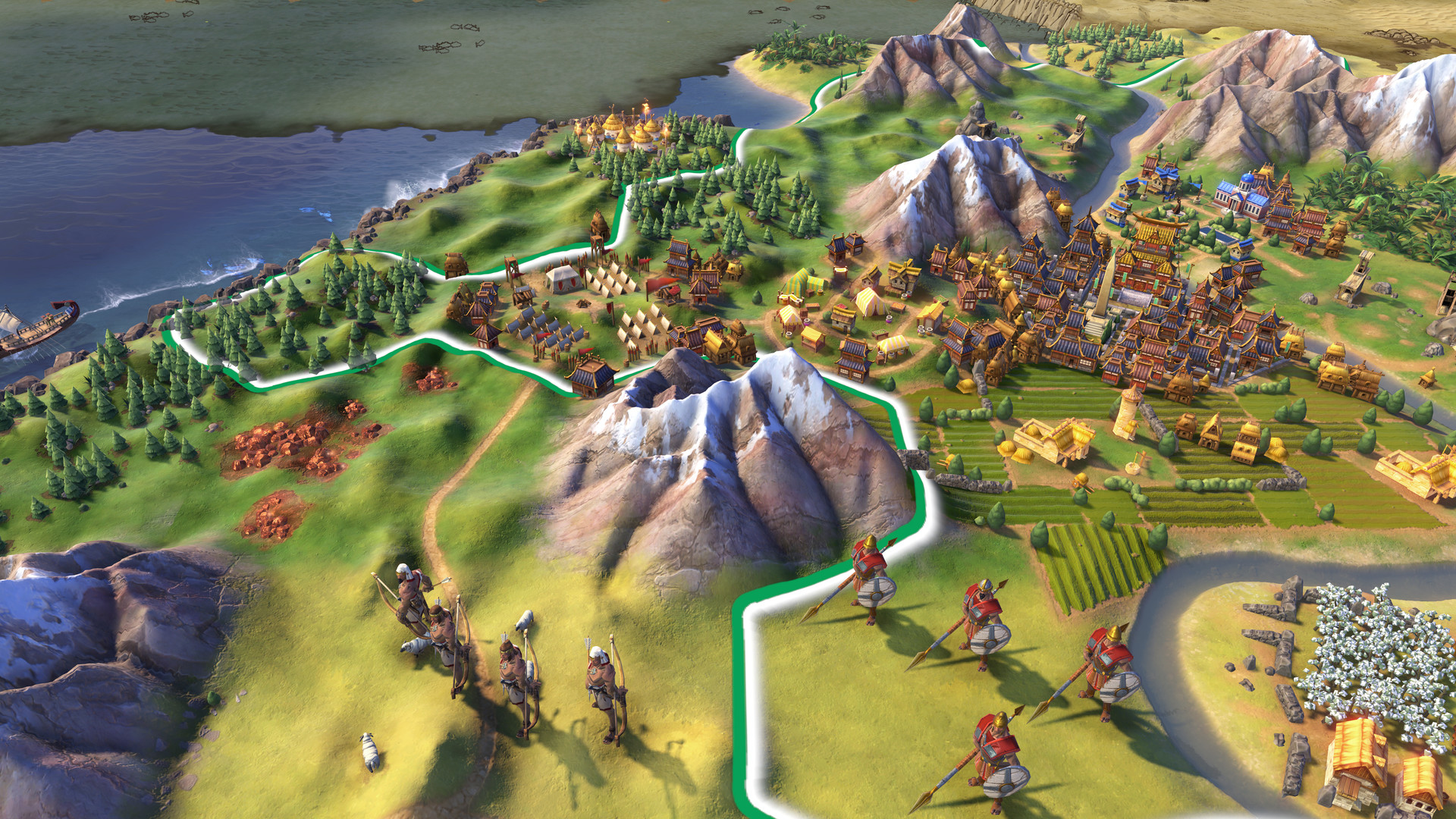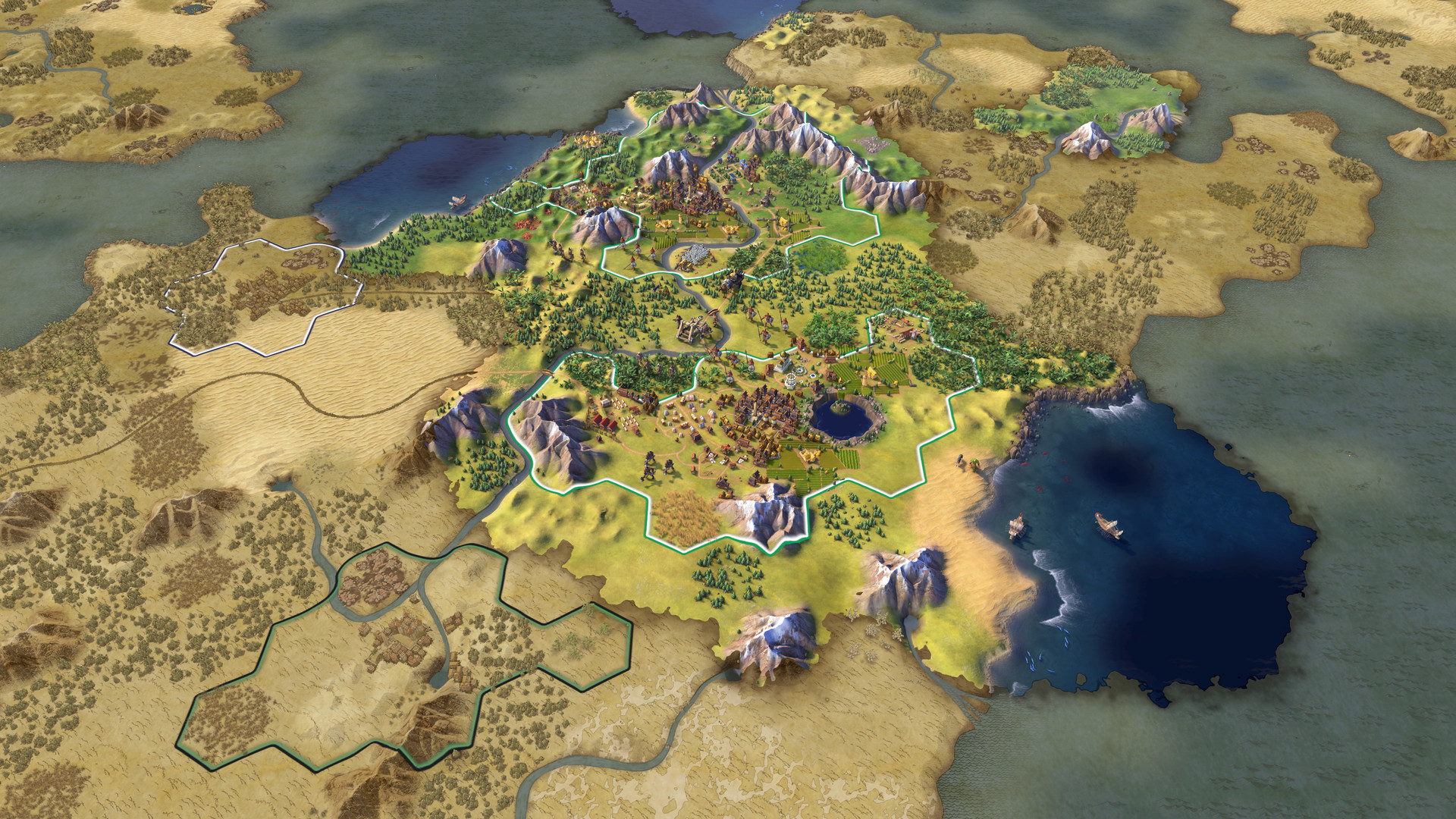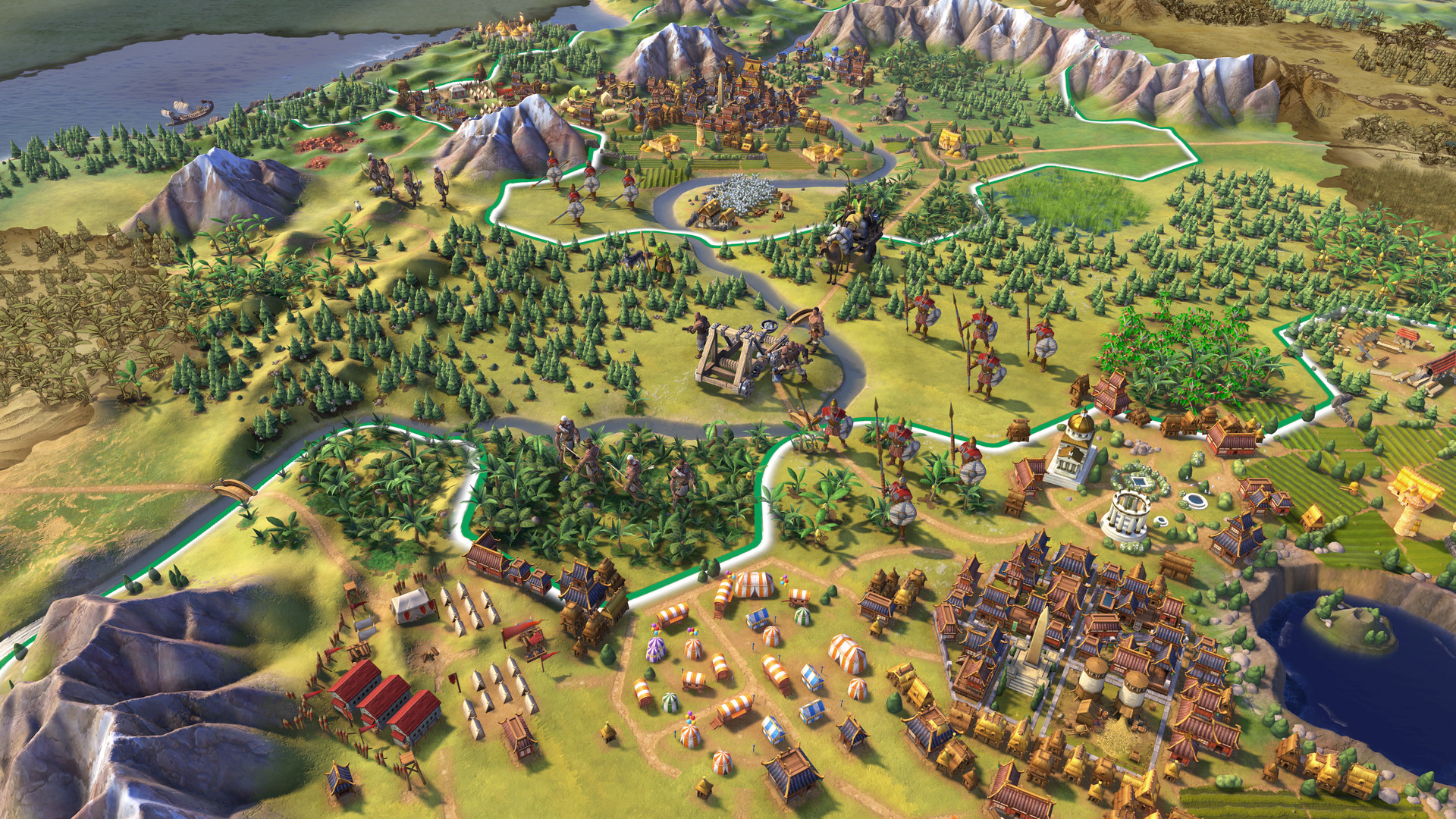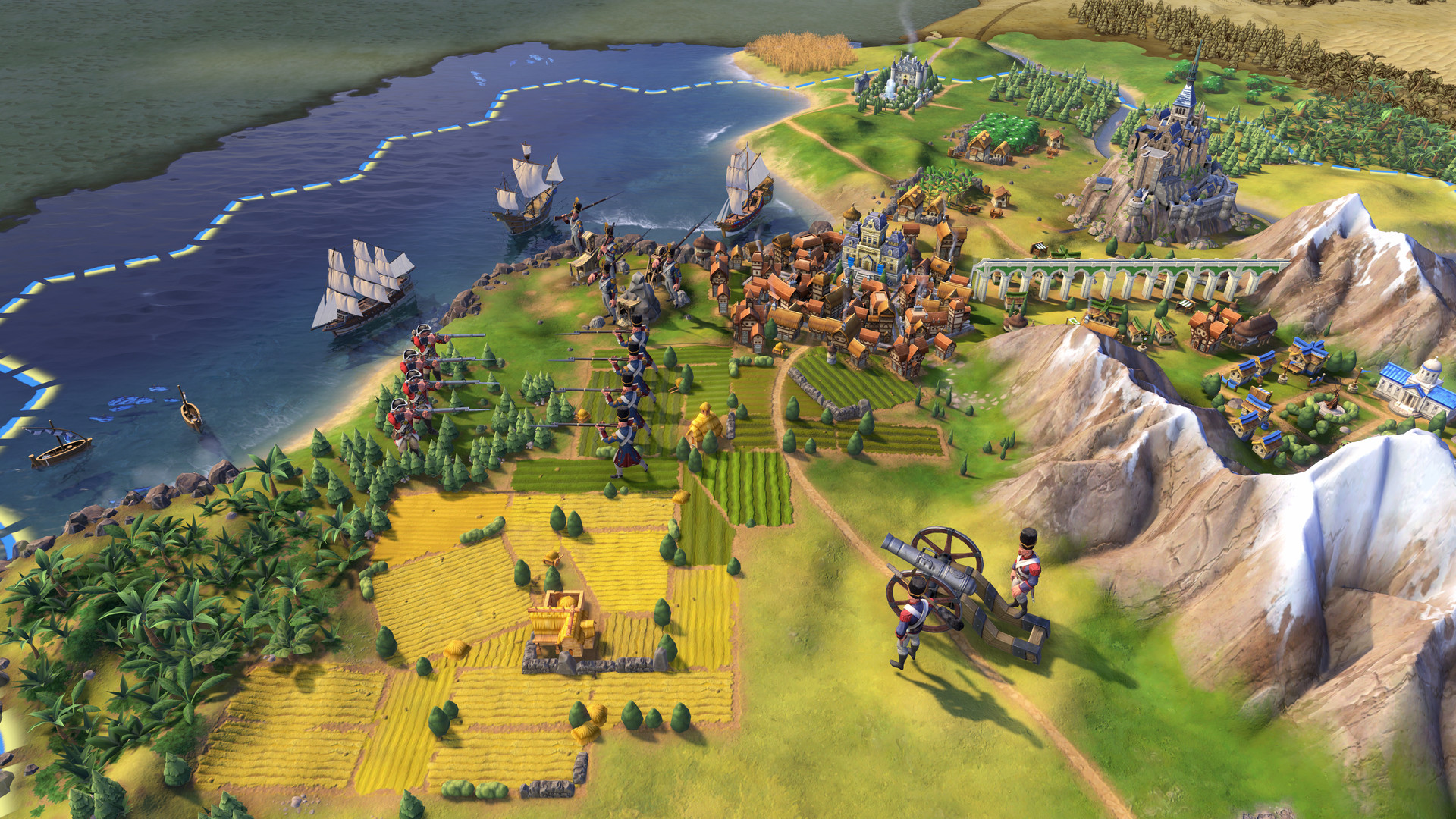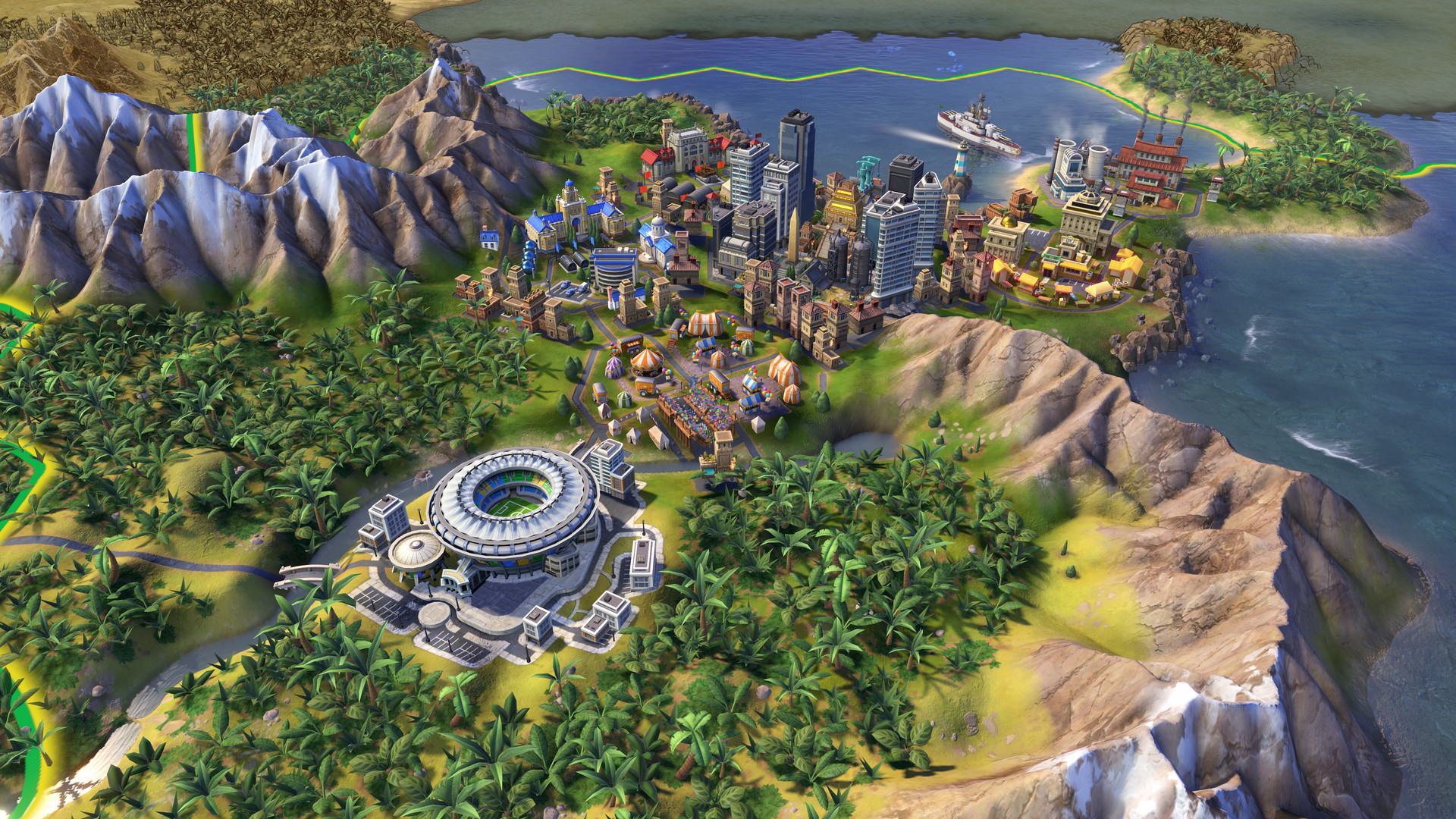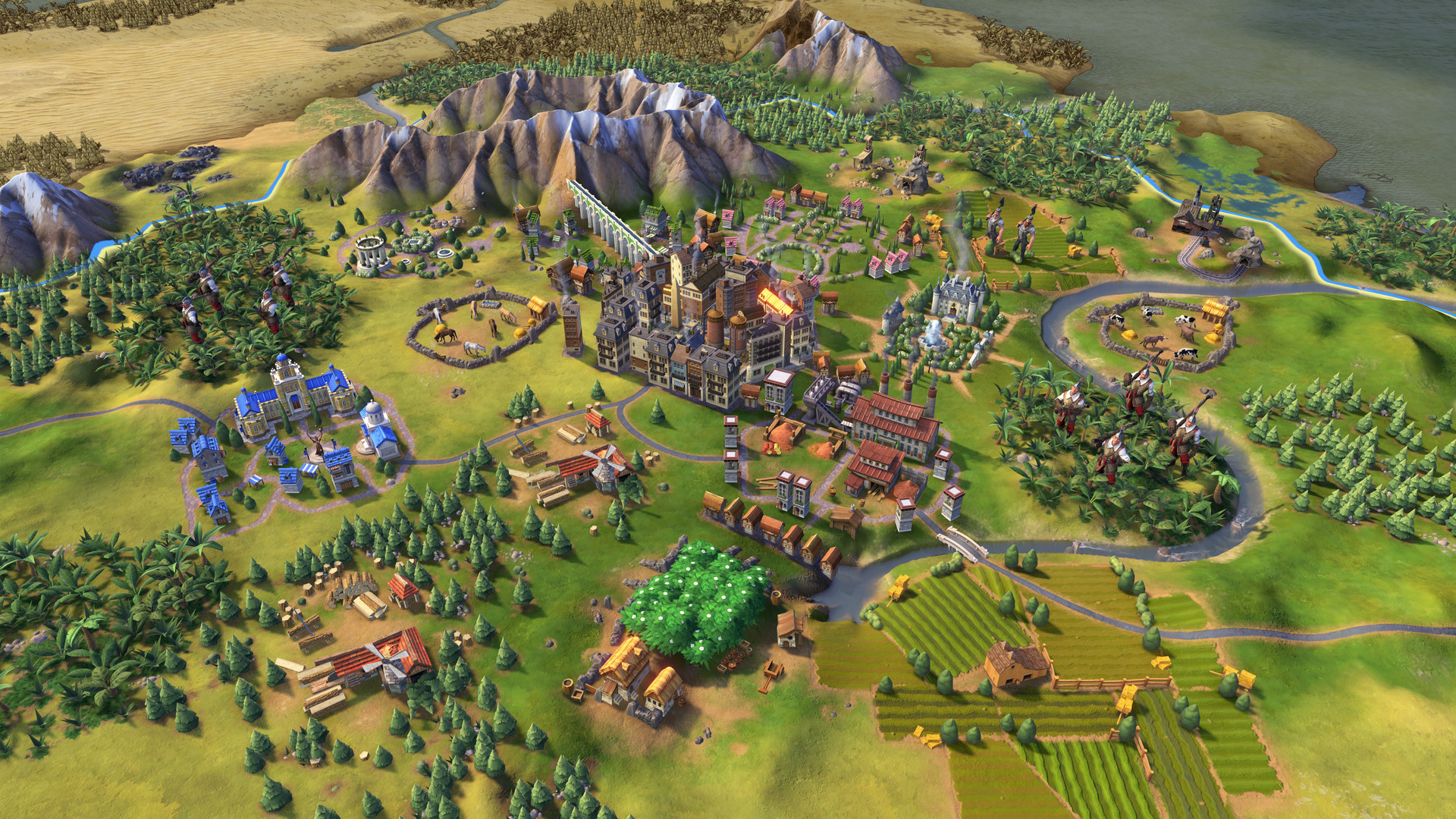Originally created by legendary game designer Sid Meier, Civilization is a turn-based strategy game in which you attempt to build an empire to stand the test of time. Become Ruler of the World by establishing and leading a civilization from the Stone Age to the Information Age. Wage war, conduct diplomacy, advance your culture, and go head-to-head with history’s greatest leaders as you attempt to build the greatest civilization the world has ever known.
Civilization VI offers new ways to engage with your world: cities now physically expand across the map, active research in technology and culture unlocks new potential, and competing leaders will pursue their own agendas based on their historical traits as you race for one of five ways to achieve victory in the game.
EXPANSIVE EMPIRES:
See the marvels of your empire spread across the map like never before. Each city spans multiple tiles so you can custom build your cities to take full advantage of the local terrain.ACTIVE RESEARCH:
Unlock boosts that speed your civilization’s progress through history. To advance more quickly, use your units to actively explore, develop your environment, and discover new cultures.DYNAMIC DIPLOMACY:
Interactions with other civilizations change over the course of the game, from primitive first interactions where conflict is a fact of life, to late game alliances and negotiations.COMBINED ARMS:
Expanding on the “one unit per tile” design, support units can now be embedded with other units, like anti-tank support with infantry, or a warrior with settlers. Similar units can also be combined to form powerful “Corps” units.ENHANCED MULTIPLAYER:
In addition to traditional multiplayer modes, cooperate and compete with your friends in a wide variety of situations all designed to be easily completed in a single session.A CIV FOR ALL PLAYERS:
Civilization VI provides veteran players new ways to build and tune their civilization for the greatest chance of success. New tutorial systems introduce new players to the underlying concepts so they can easily get started.
Steam Workshop functionality will be coming to Sid Meier’s Civilization VI in a future update.

Unquestionably one of military history’s greatest commanders, Shaka’s reforms to the Zulu armies gave them efficiency, organization, and lethality – making the impi one of the most feared forces in the world. Equally notable are Shaka’s wrath and grief which resulted in thousands of lives lost on the African continent.
He was born the illegitimate son of Zulu chief Senzangakhona, and Nandi, the daughter of a Langeni chief. The Zulu chieftain would eventually exile Nandi and Shaka. Driven out and scorned, Nandi found safe haven with the Mthethwa chief, Dingiswayo.
During this time, Shaka enrolled in the ibutho, a traditional regional military cadre program. Young men of the same age group would get grouped together into a unit within the ibutho, and the unit would eventually disband when the men aged out of the warrior class. Shaka’s unit served under the command of the chief. Dingiswayo laid the groundwork for the system of command that would eventually be brought to ultimate refinement under Shaka.
When his biological father died in 1816, Shaka, by now a renowned commander in his own right, left Dingiswayo’s armies and returned to lead the Zulu, who were at this time the smallest of the region’s Bantu clans. Southern Africa would quickly learn to fear the Zulu.
Shaka immediately reorganized the army and its training. The age-grade system of the ibutho was refined and strengthened into an age-based regimental organization, with each regiment having a distinct fortified village (or ikanda), uniform heraldry on their ox-hide shields, specific ornamentation in jewelry and headdresses, and sworn loyalty to Shaka. Organization of the impi and its tactics were standardized. Shaka introduced a corps of officers, promoted on the basis of merit and ability, from all the subordinate tribes. Comparisons to the Marian reformations of the Roman Legions are apt; both commanders took control of fundamentally competent basic forces, and transformed them into unstoppable military machines.
Shaka then took his impi on a march of conquest. His first conquest was said to be the Langeni, who humiliated him as a boy. When his former commander Dingiswayo was assassinated by the rival Zulu chief Zwide, Shaka swore vengeance, and a full-scale civil war of the Zulu broke out. Zwide was decisively routed at the Battle of Gqokli Hill by a force half his size under Shaka’s command.
But Shaka’s reign was not uncontested. There was substantial opposition to his policies within his own kingdom. Escalation of warfare between tribes into near-extermination were a marked change from previous patterns of war. Tensions were exacerbated when Shaka granted European traders concessions. But it was the death of his mother in 1827 that seems to have marked the beginning of the end of Shaka – and the bloodiest part of his reign.
Grief-stricken, Shaka ordered that no crops be planted, nor milk used for a year (and milk was the staple of the Zulu diet). Women found pregnant were to be killed with their husbands, as was anyone found to be insufficiently mournful. Cows were to be slaughtered “so that calves would know what it was like to lose a mother.” 7,000 of Shaka's subjects were killed in his grief, according to accounts.
His two half-brothers had been actively conspiring against him for some time. In 1828, while the impi were on campaign to the north, he was assassinated by his half-brothers Dingane and Mhlangana, along with a third co-conspirator named Mbopa. Tradition states that Shaka’s dying words were a warning both about the growing power of the Europeans in South Africa and about the peril of Zulu disunity.
The meteoric rise of the Zulu under Shaka, coming at a time of increasing European colonization in the region, had a profound and complex impact on the history and culture of Southern Africa, whose implications are still debated and considered. Shaka’s legacy as a ruler is not a simple one, even within Zulu culture today. But his impact on the history of the world is beyond question.

UNIQUE UNIT – IMPI
The powerful warrior regiments of the Zulu were already a formidable force when the ambitious Shaka taught them new techniques: combining the iklwa (a short stabbing spear with a broader blade than a throwing spear) and the ishlangu (a large, oval shield with cowhide layered on top). They trained to form shield walls, both to blunt projectiles and to hide their true numbers, and attack with a “buffalo horns” formation – greener troops would sweep out and around to pin the enemy’s flanks (the horns), while a more experienced center would slam into the pinned enemy (the rest of the buffalo).The impi training regimes under Shaka were nothing less than brutal, but harsh conditioning led to tightly bonded, well-disciplined soldiers able to carry out complex formations with ease. These Pikeman replacements have an increased flanking bonus, are less expensive than other combat units of the same era, have a low maintenance cost, and earn XP faster.

UNIQUE DISTRICT – IKANDA
The ikanda (also known as a “kraal” or “umuzi”) were self-sufficient, fortified Zulu homesteads. A double palisade protected its residents—the inner wall kept livestock in and the outer wall kept interlopers out. Ikanda were ideally placed uphill for reasons both practical and strategic: rainwater flowed downhill to clean the ikanda, while opponents were forced to attack an elevated position. Within Shaka’s military structure, a regiment would be stationed in an ikanda. It’s where they trained and lived.As the Zulus conquered and absorbed neighboring tribes, more ikanda would sprout up. These encampment replacements, unique to the Zulu – provide additional housing. Once Civic or Technology prerequisites are met, Corps and Armies can be built outright. This also leads to faster Corps and Army creation.
UNIQUE LEADER ABILITY – AMABUTHO
By the age of 23, Shaka lead an impi regiment. He continued his rise based upon his deeds, becoming one of chieftain Dingiswayo’s most highly-regarded commanders. Shaka was also known for drilling and rearming his troops, trading light throwing spears (assegai) for the broad-bladed iklwa and large cowhide-covered shields. As a result, in the game, Shaka may form Corps (Mercenaries Civic) and Armies (Nationalism Civic) earlier. Amabutho alsoprovides an additional Base Combat Strength to both Corps and Armies.UNIQUE CIV ABILITY – ISIBONGO
A tribe, once conquered, was subordinated into the Zulu kingdom, its young men were incorporated into the ibutho, and then the Zulu marched on. Shaka also offered diplomatic carrots, with the stick of the impi ever-present. That’s reflected in the game with Isibongo. After Shaka conquers a city, it gains bonus Loyalty when garrisoned. Conquering a city with a unit will upgrade it into a Corps or Army, if the proper Civics are unlocked.https://www.youtube.com/watch?v=owalOCcMZgU
SUBSCRIBE ➜ HTTP://2KGAM.ES/CIVILIZATIONYT
Shaka Zulu is one of the nine new leaders coming with [u]Civilization VI: Rise and Fall[/u] when the expansion releases on February 8, 2018.
Follow the conversation on social media by using the hashtag #OneMoreTurn, and be sure to follow the [u]Civilization[/u] franchise on social media to keep up to date with the latest news and information on [u]Sid Meier’s Civilization VI[/u].
Minimum Setup
- OS: Ubuntu 16.04 (64bit)
- Processor: Intel Core i3 530 or AMD A8-3870Memory: 6 GB RAM
- Memory: 6 GB RAM
- Graphics: 1 GB VRAM Minimum - NVIDIA GeForce 650
- Storage: 17 GB available spaceAdditional Notes: IMPORTANT NOTICE: Some Intel i3 Processors may require an additional 2 GB Swap Partition. IMPORTANT NOTICE: ATI and INTEL chipsets are NOT supported to run Civilization VI LINUX. Don't meet the above requirements? Running on a unique distro? That doesn't mean your configuration wont run Civ VI! Visit the Civilization VI community page to share your experience with other Linux players and learn about how to send bugs to Aspyr. Your feedback will help us improve Civ VI Linux and future AAA Linux releases!
[ 6485 ]
[ 1519 ]
[ 2422 ]

